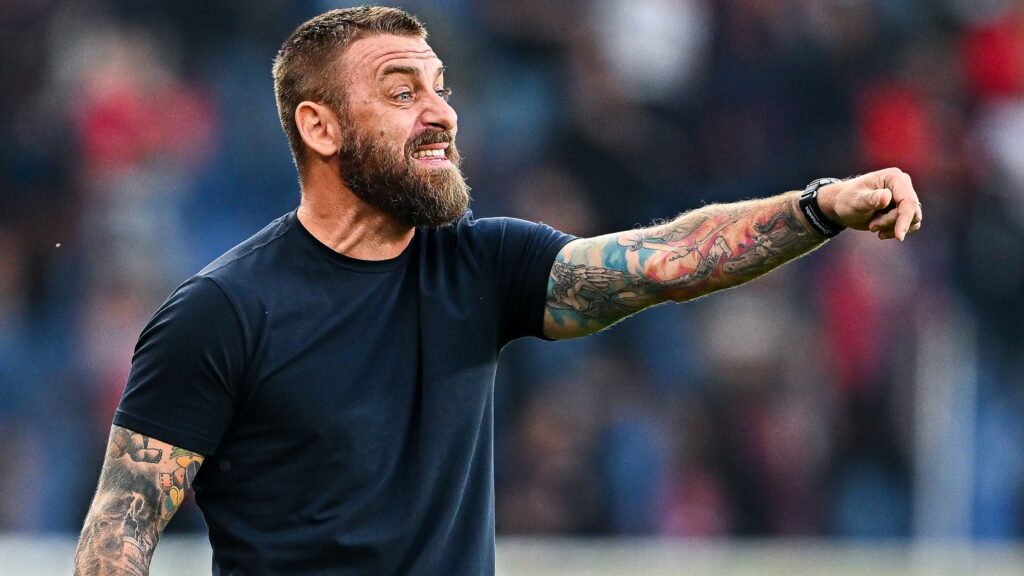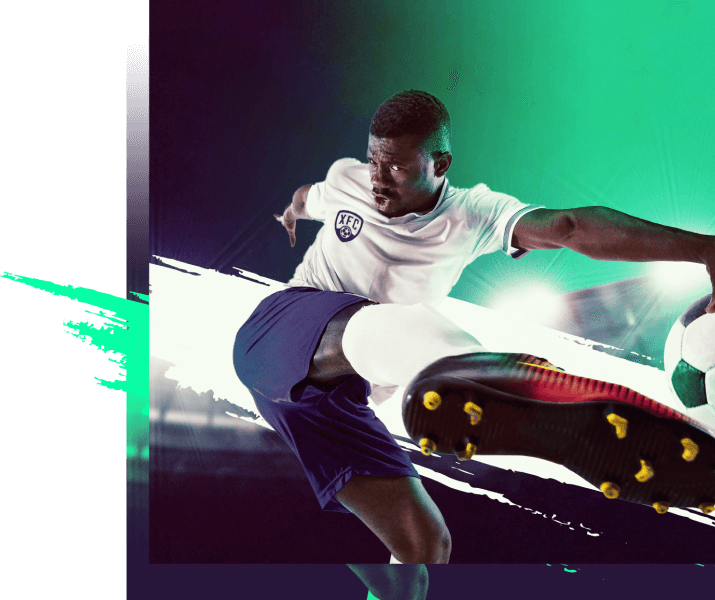Paulo Fonseca was the surprise choice for one of the most coveted jobs in all of football – manager of the mighty AC Milan. Not everything has gone the way of the Portuguese so far. This is why, today, I am looking at the tactics Paulo Fonseca has been using since the start of the 2024/25 season of Serie A.
Career Prior to Managing AC Milan
AC Milan is one of the biggest football clubs in the world. There can be no debate about this. And while the team has been successful in recent years under the guidance of Stefano Pioli, a change often looked like the best way to move forward. Enter Paulo Fonseca, a manager of some renown but certainly not a world-class name.
Fonseca was a dependable centre-back with an average playing career. The highlight of this career included playing for Estrela Amadora, bouncing around the first and second tier of Portuguese football.
His career as a coach saw Fonseca collaborate with much more famed clubs. In 2013, he was made manager of FC Porto for a short spell. In 2016, he replaced Mircea Lucescu as manager of Shakhtar Donetsk and won three successive Ukrainian Premier League titles.
Next, he was the manager of both AS Roma and Lille for two years in both positions, but failed to secure silverware both times.
Fonseca is a dependable manager, but not quite the name fans had in mind when the club announced they would be moving on from their long-serving tactician Stefano Pioli.
Football Philosophy
Paulo Fonseca is a brave manager. While results have not always been on his side throughout recent years, the Portuguese has always been bold, played offensively and looked to earn victories even against tougher opposition.
Fonseca’s teams play modern, aggressively offensive football. The main goals are to control possession for the majority of the game, press high up the pitch and offer great fluidity, especially in the final third. In this respect, the main tenets are not greatly different from the work of managers like Pep Guardiola, who have changed the shape of modern football.
Furthermore, Fonseca likes his teams to be dynamic. When pressing high up the pitch, the main objective is to get the ball into an offensive situation quickly. Transitions and verticality are integral to this plan.
Finally, Paulo Fonseca has shown that he is ready to learn. The manager adapts his tactics based on the opponents his teams are facing.
Formations and Adaptability
As previously mentioned, Paulo Fonseca is not a manager married to one set of tactics. Consequently, Fonseca is willing to change the formation of his team to adapt to the opposition or to the strengths of his squad of players.
Throughout his career, Fonseca has tended to play with four defenders in a 4-2-3-1 formation but has also employed a 3-4-2-1 formation. The former is currently the default setup with which AC Milan begins games. However, this is a very versatile strategy that can be changed and modified based on the players’ roles during the day.
This season, Fonseca has switched to a 4-3-3 on one occasion, looking to get the best out of the attacking potential he had at his disposal. In that game, Tammy Abraham starred alongside Cristian Pulisic and Rafael Leao in Milan’s attack.
Fonseca’s Transfers
Fonseca inherited a strong squad at AC Milan. However, this was clearly one that also needed to be updated if the team hoped to, once again, be the top team in Italy.
Fonseca spent over €71.70m on transfers in the 2024 window. It’s not a huge budget. However, the squad was altered to a significant degree.
Fonseca focused, particularly, on the defensive areas. Defenders Emerson Royal, Alex Jimenez and Strahinja Pavlovic were brought in. So was defensive midfielder Youssouf Fofana.
Spanish centre-forward Alvaro Morata was the marquee transfer and the attacking exception.
AC Milan in Defense
Paulo Fonseca came in with the hope of drastically altering AC Milan’s defensive structure. Still, the manager continues to play in a four-man system.
The consistent elements from previous seasons are goalkeeper Mike Maignan and right-back Theo Hernandez, undoubtedly two of the very best players in their respective positions.
Fonseca’s AC Milan presses very aggressively and is looking for quick turnarounds. The team, however, presses less far off the pitch than Pioli’s version did.
The team likes to block out the central areas of the pitch, inviting the opposition to press traps in wider areas. While this is the plan, it hasn’t always worked. Milan has struggled to defend against skilful, fast players in these positions.
Build Up
Ideally, Fonseca’s AC Milan should be a team that dominates possession. They do this through a short passing game, playing through the middle of the pitch.
The more technically gifted players are also called upon to create goal-scoring opportunities using through balls. Cristian Pulisic used almost as an inside forward within the 2024/2025 tactics, has especially shone in this department. The American registers 2.4 key passes per game and often attempts killer through balls.
The midfield pivot of Youssouf Fofana and Tijani Reijnders can also offer great, reliable build-up down the middle. Indeed, it’s been in other areas of the game that the duo’s performances have suffered.
AC Milan in Attack
AC Milan’s form has oscilated in this start of the season. Part of this is down to the team’s very difficult fixture list. While the Rossoneri have been convincing in front of goals in certain matches, they’ve been outscored in others.
Milan tends to press in a 4-2-4 shape and does it very aggressively. Many of their goal-scoring chances come from these turnarounds, but the risks of the press failing are huge.
When pressed and needing to play long, Fonseca has turned to Morata’s aerial ability and knowledge of the game. The Spaniard will often drop deeper, acting almost as an acting pivot, and often choosing to play the next pass to one of the fullbacks, for example, to Royal.
Currently, Milan has the third-best scoring record in Serie A. Pulisic, who is on a hot streak and has been the team’s best goalscorer. Alvaro Morata is also beginning to contribute in this respect.
At the heart of Milan’s attacking phase is the use of highly fluid positional play. For example, Morata often switches roles with Tammy Abraham, who usually plays a more advanced role. This gives defenders a choice to make in terms of who to mark.
Milan attacks through the middle of the pitch, looking to create central overloads. The team attacks using quick, short passes. Strikers and wingers will often make diagonal runs, while midfielders like Pulisic and Reijnders will attempts through balls.
Fonseca also hopes to rely on the squad’s depth in attacking positions. Luka Jovic and Noah Okafor look like good choices for strong substitute players throughout a long season.
Still, Milan’s attackers have often struggled to convert chances. For example, Abraham has an xG of 3.22, but only 1 goal scored. Rafael Leao has an xG of 2.8 and 1 goal scored. Only Pulisic is outscoring his xG by a wide margin which may be translating into a run of form that can’t be sustained.














